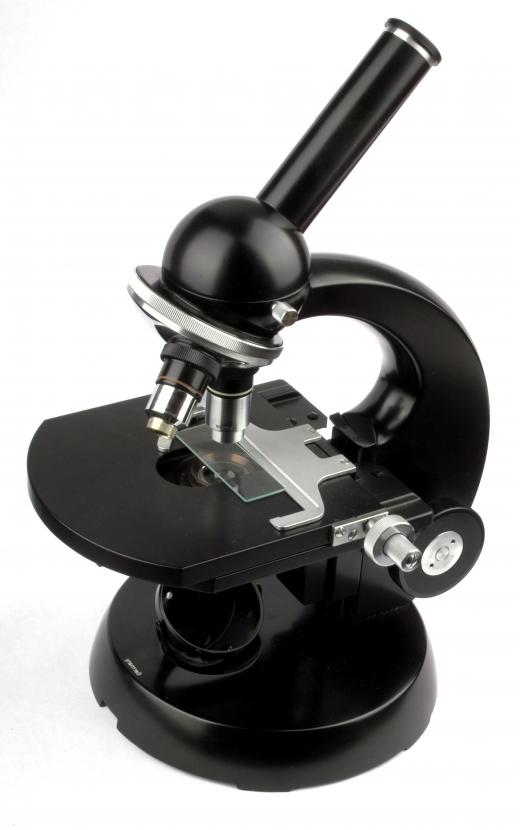How do I Choose the Best Microscope Eyepiece?
When working with a microscope, there are two primary lenses that must be considered: the ocular lens, located in the eyepiece, and the objective lens, located closer to the sample. The magnification of the ocular lens is multiplied by that of the objective lens to determine the total magnification of the microscope. Each lens has a different function, and to choose the best microscope eyepiece, it's necessary to consider how the two lenses are going to work together to properly focus the image. The type of specimens being examined will also be a factor when choosing a microscope eyepiece.
When they were first invented, the microscopic ocular lens only had one lens. This single lens, however, did not provide very high image quality. Most modern ocular lenses are actually a combination of two lenses or, less commonly, three lenses cemented together into a single eyepiece.

Most microscope users looking for details on a particular specimen are going to be using a high-powered microscope. These scopes usually offer three or four options for objective lens magnification. Manufacturers often design their microscopes to work with a particular type of ocular lens, and the limitations outlined by the microscope's manufacturer should be considered before shopping for alternative eyepieces.

Many users find that they prefer to use a widefield lens when working with their microscope. These widefield lenses are designed to allow the user to have a non-distorted view of the full lens area rather than being restricted to the center, offering a wider view that is extremely beneficial when working with large samples. Widefield lenses can be identified by the WF seen before their lens specification.
Most oculars have a magnification of 10, which means that all objects viewed through the lens are magnified by 10x the magnification of the objective lens. Most microscopes are also capable of working with a microscope eyepiece that offers a magnification of 5x or 20x as well. Eyepieces are detachable, and the ocular lens is included in the eyepiece rather than separately, so it is possible to maintain a collection of eyepieces at different magnifications for multiple uses.
As the primary function of the microscope eyepiece is to provide the proper view of the specimen, the necessary resolution should be the primary consideration when choosing an ocular lens. Excessive resolution of a large specimen makes a complete examination in a reasonable amount of time next to impossible, so it is important to resist the temptation to purchase an ocular lens with an excessively high resolution. By contrast, insufficient resolution of a sample makes smaller samples hard to see, and makes complete examination extremely difficult.
Choosing the correct microscope eyepiece relies heavily on personal need. It should not be considered to be a "one size fits all" proposition. Most regular users of a microscope for extensive study prefer to keep a collection of microscopic lenses at their disposal to allow for variation with multiple samples.
AS FEATURED ON:
AS FEATURED ON:












Discuss this Article
Post your comments